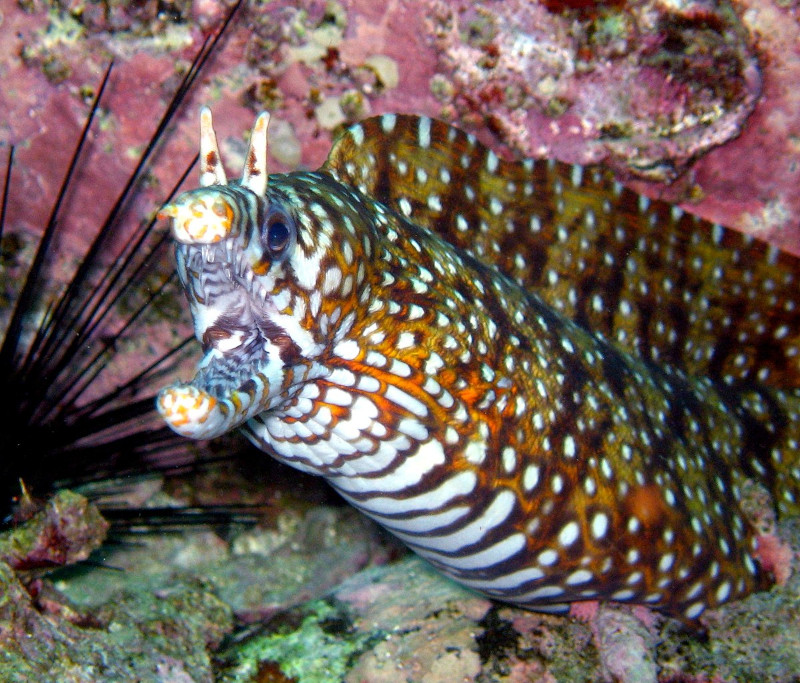Dragon Moray Eel Facts
- he amazing Dragon Moray Eel stands out from the crowd of its many related creatures for its incredibly colored body. In fact, this visually breathtaking animal quite easily remains one of the most colorful of all known species of eel.
- Many people, including researchers, also consider one of the unique bodily features of the species to be a fascinating evolutionary development. This distinctive feature resembles a pair of horns of dragons of lore, hence the common name.
- The species also possesses an extremely voracious appetite and tends to be highly aggressive in overall nature. Due to this combination of factors, individuals of this impressive species will feed on virtually any creature that will fit in its mouth.
- This amazing animal also has the astounding ability to spontaneously change its gender, to the great surprise of many. This occurs as a result of the lack of sufficient numbers of the opposite sex. Some hermaphrodites have even been found.
- For the moment, the population numbers of the stunning Dragon Moray Eel appear to be both stable and sufficient. The IUCN, therefore, presently has no listing for this particular animal on its Red List of Threatened Species.
Related Articles
Dragon Moray Eel Physical Description
Currently, scientists classify the beautiful Dragon Moray Eel as a medium-sized species of eel. This occurs because individuals attain an average length of just over 3 ft (1 m). In addition, the bodies develop as highly elongated, the same as other eels.
The brilliant colors of the species also represent its most noteworthy physical feature. In fact, each individual displays a combination of yellow, orange, red, black, and white markings along the length of its body. These remain as distinct as fingerprints.
Each individual of the Dragon Moray Eel also possesses a pair of highly elongated tubular nostrils on its head. It is these that many think resemble dragon horns, thus leading to the common name. The over-sized mouth also contains numerous razor-sharp teeth.
- Kingdom: Animalia
- Phylum: Chordata
- Class: Actinopterygii
- Order: Anguilliformes
- Family: Muraenidae
- Genus: Enchelycore
- Species: E. pardalis
Dragon Moray Eel Distribution, Habitat, and Ecology
To begin with, the brilliantly colored Dragon Moray Eel primarily inhabits the Indo-Pacific region. This also includes a range from Hawaii to Japan. Within that area, it primarily inhabits regions of coral reefs and rock formations on shallow ocean bottoms.
Most studied specimens of this wonder of Nature also typically live at very shallow depths ranging from 26-197 ft (8-60 m). Additionally, individuals and pairs alike usually prefer to inhabit a shallow den constructed within the local surroundings.
Hunting for prey typically occurs at night. That’s because its natural coloring remains less obvious in the reduced lighting. This carnivore mainly preys on shrimp, fish, squid, or crab, but the animal will also attack anything it feels it can consume.
While the Dragon Moray Eel often chooses to live in pairs, the species reproduces through spawning. This trait it shares with a great number of species in the various oceans of the world. The reason for the pairing, though, remains a mystery to researchers.
Species Sharing Its Range
Check out our other articles on 5 Incredibly Wonderful Trees, Wood Frog, Bulbophyllum phalaenopsis, Onyx River, Golden-Handed Tamarin, Kakapo, Delta Green Ground Beetle, Weka

